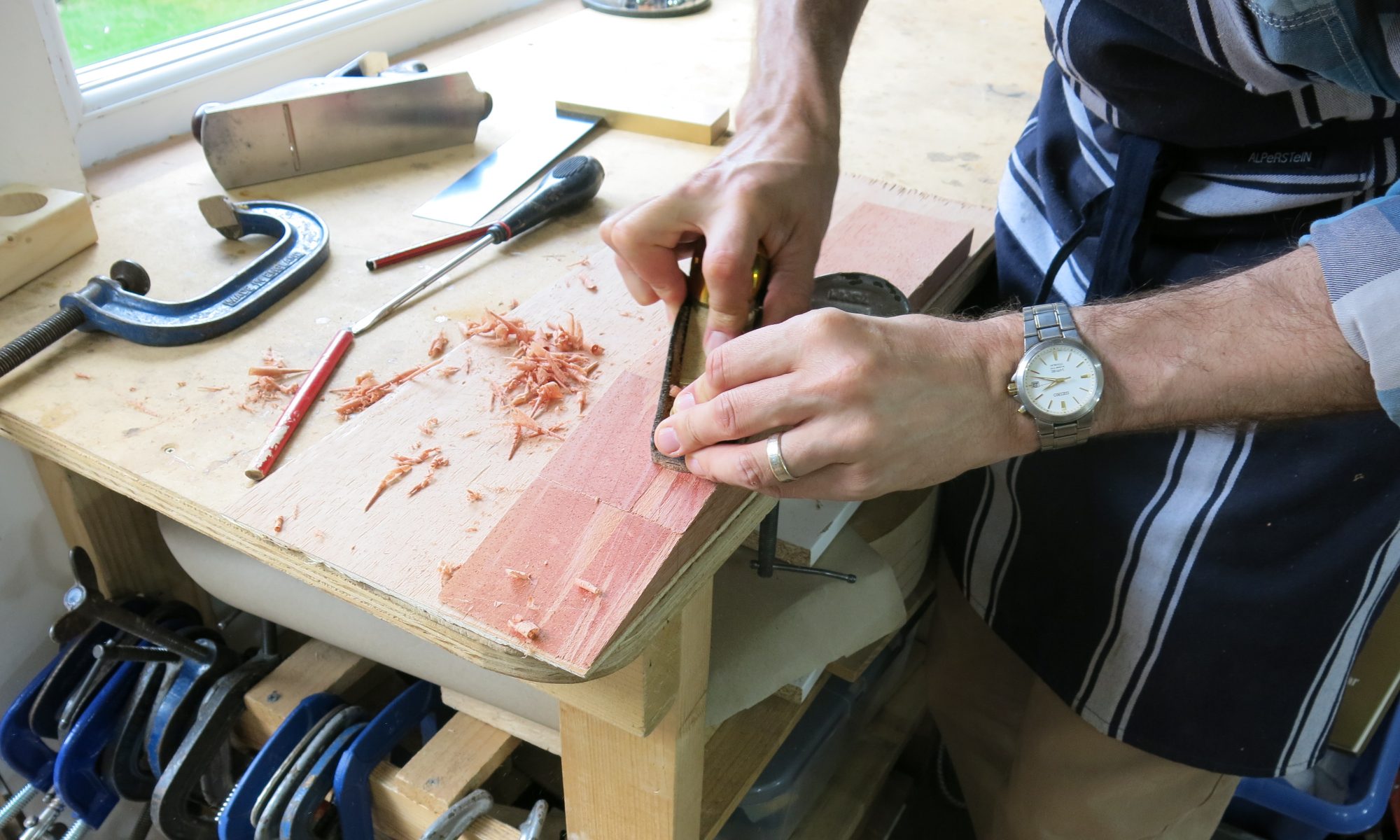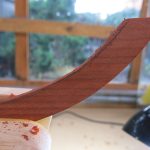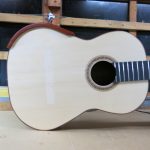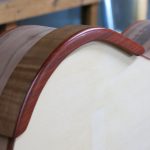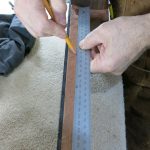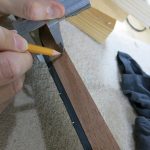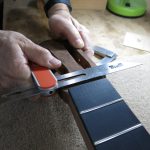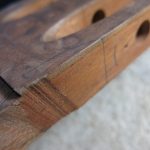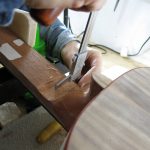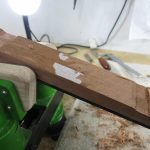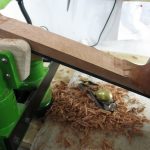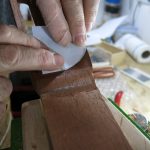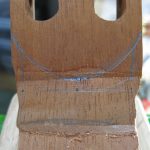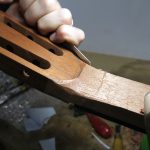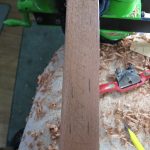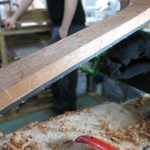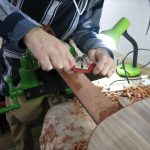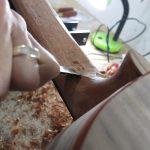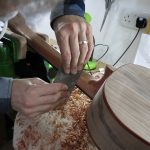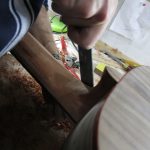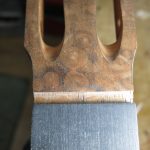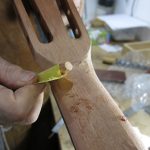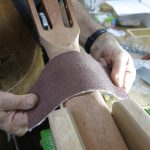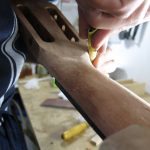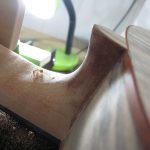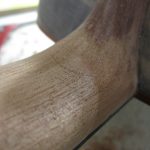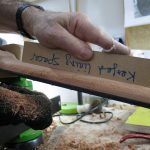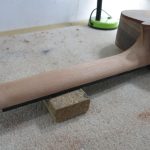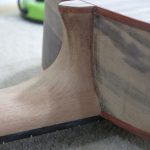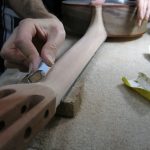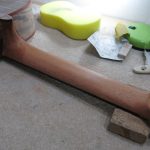At home I have been working on the arm rest and have more or less got it into shape by scraping and sanding. There’s no standard dimensions, so it’s quite nice to be working freely on something.
Today with Roy was hugely satisfying, not least because I got to use a range of carving and cutting tools again, but also because of the tactile nature of shaping and sculpting the neck.
I began by marking out the depth of the neck: 22mm around the first fret and 23mm around the 9th fret. Using a chisel, I cut sections out to depth and then joined them up by planing across the neck to within 1mm of the final measurements.
Then, using the template for the head, I marked the curves down to the nut and was careful to ensure that on the middle section, the ramp of the neck met the head at the glue line.
I wanted a relatively flat area down the middle of the neck, so I marked off where the curved sides down to the fretboard should roughly begin. Then, using a spokeshave, I had fun taking off the bulk of excess Cedrela.
I then blended the heel into the new neck dimensions with a gouge, bevelled chisel and scraper. Scrapers are such wonderful tools. Who’d have thought that a simple plate of steel could be so enjoyable and effective to use? With it, I rounded off the sides along the length of the neck.
Then onto sanding, getting the head and heel right first. Then ‘shoe-shining’ the length of the neck with a coarse paper meant for a belt sander. I regularly checked that the neck was level (this time with a piece of board we’d checked was straight).
I worked the whole of the neck with 100/150/180/240 papers and then gave it a coat of shellac to bring the grain up.
The finished neck has really brought the guitar to life. I finished the day, eyes closed with it in my hands, imagining how it would play.
French polishing begins next weekend!
Today corresponds to Roy’s book pp. 300-303.
